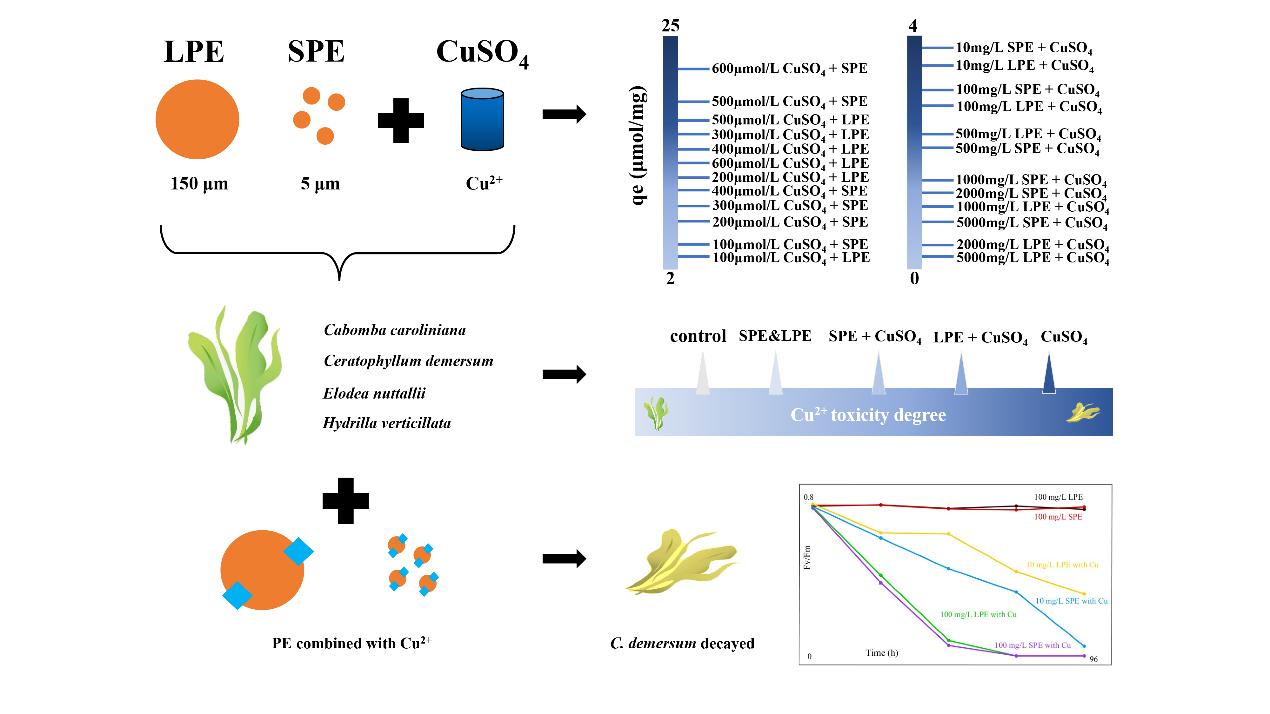Name:CAO Yu
Tell:
Email:caoyu@wbgcas.cn
Organization:Wuhan Botanical Garden
Microplastics Act as Both An Antidote or Trojan horse of Cu2+Toxicity in Submerged Macrophytes
2022-06-27
Microplastics (MPs) are plastic particles with size < 5 mm and can adsorb other contaminants (i.e. heavy metals), thus impacting their toxicity and fate in aquatic ecosystems due to their unique surface structures and physicochemical properties. Research on combined effects of MPs and other contaminants on organisms is limited and the conclusions remain controversial.
Researchers from Wuhan Botanical Garden, together with the collaborators from Wuhan University, addressed this research gap by investigating the adsorption behavior of copper ions (Cu2+) on different-sized polyethylene (PE) (5 and 150 μm) and their combined effects on four submerged macrophytes species. Adsorption tests, batch experiments on combined effect of MPs and Cu2+ were conducted.
The results demonstrated that the addition of PE reduced Cu2+ concentrations in the mixed solution. Both the initial Cu2+ and MPs concentrations affected the adsorption amounts of Cu2+ in MPs. PE alone did not exhibit inhibitory effects on macrophytes, while Cu2+ showed fatal toxicity. The combination of PE and Cu2+ reduced the toxicity of Cu2+ to macrophyte and the toxicity attenuation varied among species. Furthermore, PE could transport Cu2+ between different systems and therefore transfer Cu2+ toxicity on macrophytes in the imported system.
This study indicates that MPs show dual effects on macrophytes: acting as antidote to mitigate the toxicity of other contaminants through adsorption, and acting as a carrier to import external pollutants into new environments through desorption.
This work was supported by the National Natural Science Foundation of China. Results have been published on Water research entitled “Antidote or Trojan horse for submerged macrophytes: Role of microplastics in copper toxicity in aquatic environments”.

Antidote or Trojan horse for submerged macrophytes: Role of microplastics in copper toxicity in aquatic environments (Image by WBG)